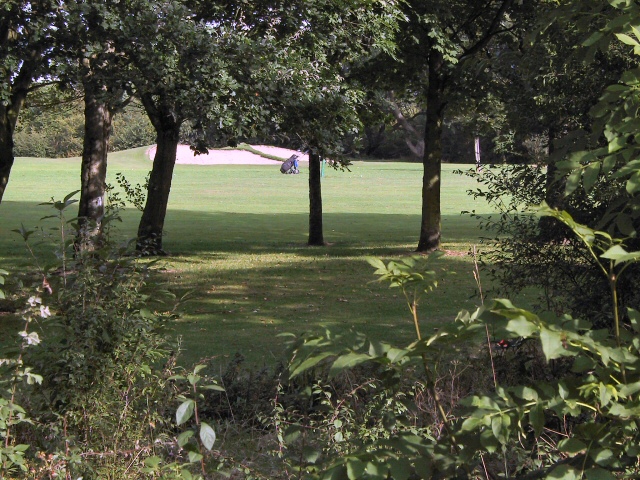|
Ælfwine
Ælfwine (also ''Aelfwine'', ''Elfwine'') is an Old English personal name. It is composed of the elements ''ælf'' "elf" and ''wine'' "friend", continuing a hypothetical Common Germanic given name ''*albi- winiz'' which is also continued in Old High German and Lombardic as ''Albewin'', ''Alpwin'', ''Albuin'', ''Alboin''. Old Norse forms of the name are Alfvin and Ǫlfun. The modern name Alwin may be a reduction of this name, or alternatively of ''Adalwin'', the Old High German cognate of the Anglo-Saxon Æthelwine. The name of the elves is clearly of Common Germanic age. As an element in given names, it is not found in the earliest period, but it is well attested from the 6th century and extinct by the Late Middle Ages. Etymology The ''ælf'' and the ''wine'' element are frequent elements in Germanic anthroponymy, and these elements have in historical practice been combined without a compound meaning, though the name is often interpreted as "elf-friend". This translation was not ... [...More Info...] [...Related Items...] OR: [Wikipedia] [Google] [Baidu] |
Ælfwine Of Deira
Ælfwine (c. 661 – 679) was the King of Deira from 670 to 679. He was a son of Oswiu of Northumbria and a brother of Ecgfrith of Northumbria. After the succession of Ecgfrith as king of Northumbria in 670, he made Ælfwine king of the sub-kingdom of Deira. Ælfwine was still a boy at the time, and the title may have been intended to designate him as the heir of the childless Ecgfrith. He was, however, killed in battle against the Mercians at the Battle of the Trent in 679. Although his death could have led to an escalation of the war, further conflict was averted by the intervention of the Archbishop of Canterbury, Theodore, and King Æthelred of Mercia paid a ''weregild'' to Ecgfrith in compensation for Ælfwine's death. Bede writes: “In the ninth year of the reign of King Ecgfrith (in 679), a great battle was fought between him and Æthelred, king of the Mercians, near the river Trent The Trent is the third Longest rivers of the United Kingdom, longest river in ... [...More Info...] [...Related Items...] OR: [Wikipedia] [Google] [Baidu] |
Ælfwine Of Lichfield
__NOTOC__ Ælfwine or Ælle was a medieval Bishop of Lichfield. He was consecrated between 903 and 915 and died between 935 and 941.Fryde, et al. ''Handbook of British Chronology'' p. 218 Ælfwine appears to have had a close relationship with King Æthelstan. Ælfwine was probably close to Æthelstan before he became king, and consistently attested the king's charters in a more prominent position than his status should have entitled him to. The historian Sarah Foot has suggested that Ælfwine may have been the " Æthelstan A", the name given by historians to the draftsman who crafted unusually detailed charters between 928 and 935, as he ceased witnessing at the same time as the Æthelstan A charters ended.Foot ''Æthelstan'' pp. 72, 98 Citations References * * External links * Anglo-Saxon bishops of Lichfield 10th-century English bishops 10th-century deaths Year of birth unknown Year of death unknown {{England-bishop-stub ... [...More Info...] [...Related Items...] OR: [Wikipedia] [Google] [Baidu] |
Legendarium
Tolkien's legendarium is the body of J. R. R. Tolkien's mythopoeic writing, unpublished in his lifetime, that forms the background to his ''The Lord of the Rings'', and which his son Christopher summarized in his compilation of ''The Silmarillion'' and documented in his 12-volume series ''The History of Middle-earth''. The legendarium's origins reach back to 1914, when Tolkien began writing poems and story sketches, drawing maps, and inventing languages and names as a private project to create a mythology for England. The earliest story, "The Voyage of Earendel, the Evening Star", is from 1914; he revised and rewrote the legendarium stories for most of his adult life. ''The Hobbit'' (1937), Tolkien's first published novel, was not originally part of the larger mythology but became linked to it. Both ''The Hobbit'' and ''The Lord of the Rings'' (1954 and 1955) are set in the Third Age of Middle-earth, while virtually all of his earlier writing had been set in the first t ... [...More Info...] [...Related Items...] OR: [Wikipedia] [Google] [Baidu] |
Ælfwine Of Elmham
__NOTOC__ Ælfwine was a medieval Bishop of Elmham The Bishop of Norwich is the Ordinary (Catholic Church), ordinary of the Church of England Anglican Diocese of Norwich, Diocese of Norwich in the Province of Canterbury. The diocese covers most of the county of Norfolk and part of Suffolk. Th .... Ælfwine was consecrated before 1019 and died on 12 April between 1023 and 1038. References External links * Bishops of Elmham 1023 deaths Year of birth unknown {{England-bishop-stub ... [...More Info...] [...Related Items...] OR: [Wikipedia] [Google] [Baidu] |
Ælfwine Haroldsson
Ælfwine Haroldsson or Ælfwine (fl. 1060–62) was most probably a son of King Harold Harefoot of England. He was probably born during the early 1030s, either in Scandinavia or after 1035 in England. He appears in an early twelfth-century cartulary from the monastery of Sainte Foi at Conques in Aquitaine as ''Alboynus'' (a cognate of Ælfwine), alongside the records that he was born in London and was the son of a King ''Heroldus'' (a Latinised version of Harold) and one ''Alveva'' ("Ælfgifu" Latinised). It is also noted that he arrived in Conques in 1060 on pilgrimage and persuaded the local authorities to rebuild the church and make him its Prior. W. H. Stevenson showed the only chronologically plausible candidate for his father is King Harold Harefoot. With Harold Harefoot's sudden death on 17 March 1040 Ælfwine was most likely left in his otherwise unknown mother's care, or even that of his powerful and influential grandmother Ælfgifu of Northampton, who may be the Ælfgifu ... [...More Info...] [...Related Items...] OR: [Wikipedia] [Google] [Baidu] |
Ælfwine Of Wells
__NOTOC__ Ælfwine (or Aelfwin) was an Anglo-Saxon The Anglo-Saxons, in some contexts simply called Saxons or the English, were a Cultural identity, cultural group who spoke Old English and inhabited much of what is now England and south-eastern Scotland in the Early Middle Ages. They traced t ... Bishop of Wells. He was consecrated about 997, and died around 998.Fryde, et al. ''Handbook of British Chronology'' p. 222 Citations References * External links * Bishops of Wells 990s deaths Year of birth unknown 10th-century English bishops {{England-bishop-stub ... [...More Info...] [...Related Items...] OR: [Wikipedia] [Google] [Baidu] |
Æthelweard (son Of Alfred)
Æthelweard (died 920 or 922) was the younger son of King Alfred the Great and Ealhswith. Early life and education He was born about 880. That he was Alfred's younger son by Ealhswith is stated by Asser in his biography of the king ( 893). Asser also provides valuable detail on the boy's upbringing. Whereas his brother Edward and sister Ælfthryth were raised and educated at court, Æthelweard was sent to a type of school (''schola''), where he learned to read and write both Latin and Old English and was instructed in the liberal arts "under the attentive care of teachers, in company with all the nobly born children of virtually the entire area, and a good many of lesser birth as well." Such education would have started at an early age, before the onset of adolescence. Estates and activity Through Alfred's patronage, Æthelweard became a wealthy landowner. In his father's will (AD 873 x 888), in which he is unnamed but called Alfred's "younger son" (''þam gingran minan suna '') ... [...More Info...] [...Related Items...] OR: [Wikipedia] [Google] [Baidu] |
Alboin
Alboin (530s – 28 June 572) was List of kings of the Lombards, king of the Lombards from about 560 until 572. During his reign the Lombards ended their migration period, migrations by settling in Kingdom of the Lombards, Italy, the northern part of which Alboin conquered between 569 and 572. He had a lasting effect on Italy and the Pannonian Basin; in the former, his invasion marked the beginning of centuries of Lombard rule, and in the latter, his defeat of the Gepids and his departure from Pannonia ended the dominance there of the Germanic peoples. The period of Alboin's reign as king in Pannonia following the death of his father, Audoin, was one of confrontation and conflict between the Lombards and their main neighbours, the Gepids. The Gepids initially gained the upper hand, but in 567, thanks to his alliance with the Avars (Carpathians), Avars, Alboin inflicted a decisive defeat on his enemies, whose lands the Avars subsequently occupied. The increasing power of his new ... [...More Info...] [...Related Items...] OR: [Wikipedia] [Google] [Baidu] |
Battle Of Brunanburh
The Battle of Brunanburh was fought in 937 between Æthelstan, King of Kingdom of England, England, and an alliance of Olaf Guthfrithson, King of Kingdom of Dublin, Dublin; Constantine II of Scotland, Constantine II, King of Scotland; and Owain ap Dyfnwal (fl. 934), Owain, King of Kingdom of Strathclyde, Strathclyde. The battle is sometimes cited as the point of origin for English national identity: historians such as Michael Livingston argue that "the men who fought and died on that field forged a political map of the future that remains, arguably making the Battle of Brunanburh one of the most significant battles in the long history not just of England, but of the whole of the British Isles." Following an unchallenged Æthelstan's invasion of Scotland, invasion of Scotland by Æthelstan in 934, possibly launched because Constantine had violated a peace treaty, it became apparent that Æthelstan could be defeated only by an alliance of his enemies. Olaf led Constantine and ... [...More Info...] [...Related Items...] OR: [Wikipedia] [Google] [Baidu] |
Aelfwine's Prayerbook
This is an incomplete list of some of the manuscripts from the Cotton library that today form the Cotton collection of the British Library. Some manuscripts were destroyed or damaged in a fire at Ashburnham House in 1731, and a few are kept in other libraries and collections. Robert Bruce Cotton organized his library in a room long by six feet wide filled with bookpresses, each with the bust of a figure from classical antiquity on top. Counterclockwise, these were Julius Caesar, Augustus, Cleopatra, Faustina, Tiberius, Caligula, Claudius, Nero, Galba, Otho, Vitellius, Vespasian, Titus, and Domitian. (Domitian had only one shelf, perhaps because it was over the door). In each press, each shelf was assigned a letter; manuscripts were identified by the bust over the press, the shelf letter, and the position of the manuscript (in Roman numerals) counting from the left side of the shelf. Thus, the Lindisfarne Gospels, Nero B.iv, was the fourth manuscript from the left on the se ... [...More Info...] [...Related Items...] OR: [Wikipedia] [Google] [Baidu] |

